What is Nabeyaki Udon?
Nabeyaki udon (鍋焼うどん), or “nabeyaki” for short, is not your average udon dish.
While most udon soup dishes are served in a bowl and topped with a few simple ingredients, nabeyaki udon is cooked with a variety of meat and vegetables in a “donabe” (土鍋) earthenware pot.
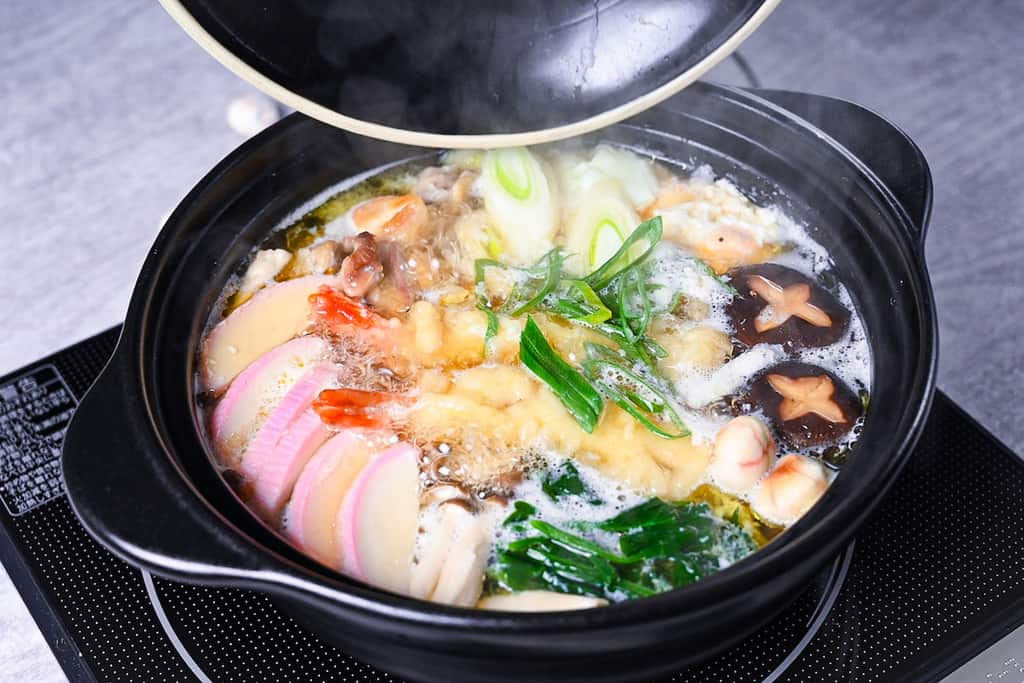
Because of all of the different ingredients, nabeyaki udon is very filling and nutritious, it’s especially comforting in winter!
Although “yaki” is the Japanese word for fry/grill, it is completely different from “yaki udon, ” a kind of noodle stir fry. Nabeyaki udon falls under the category of hotpot dishes.
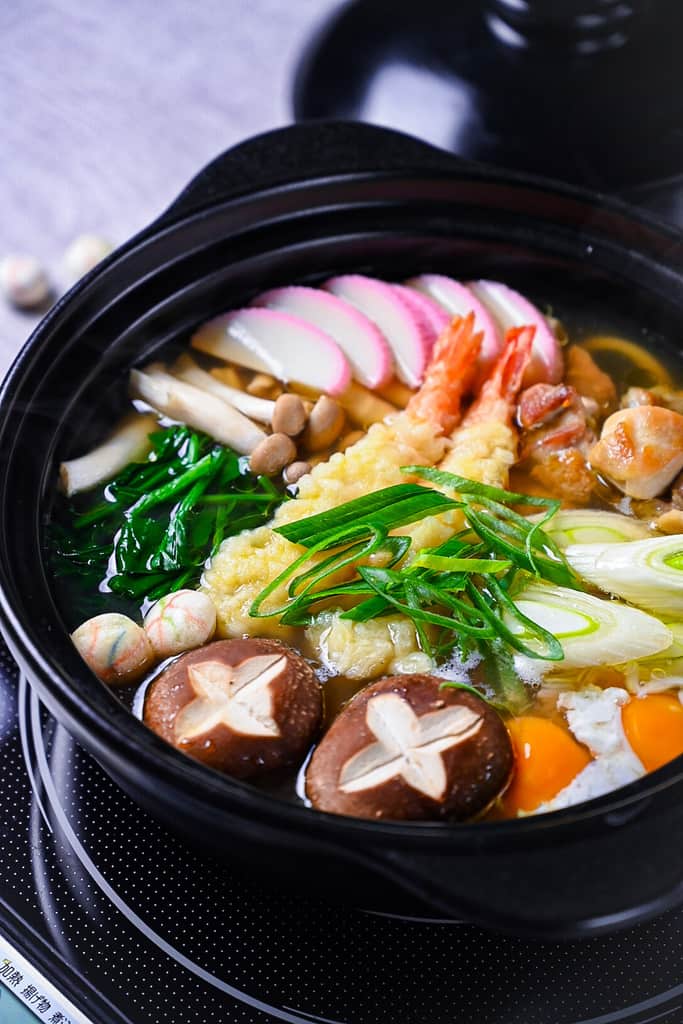
Visual Walkthrough & Tips
Here are my step-by-step instructions for how to make Nabeyaki Udon at home. For ingredient quantities and simplified instructions, scroll down for the Printable Recipe Card below.
Heat oil in a pan, season chicken with salt and pepper, and fry skin-side down until crispy.
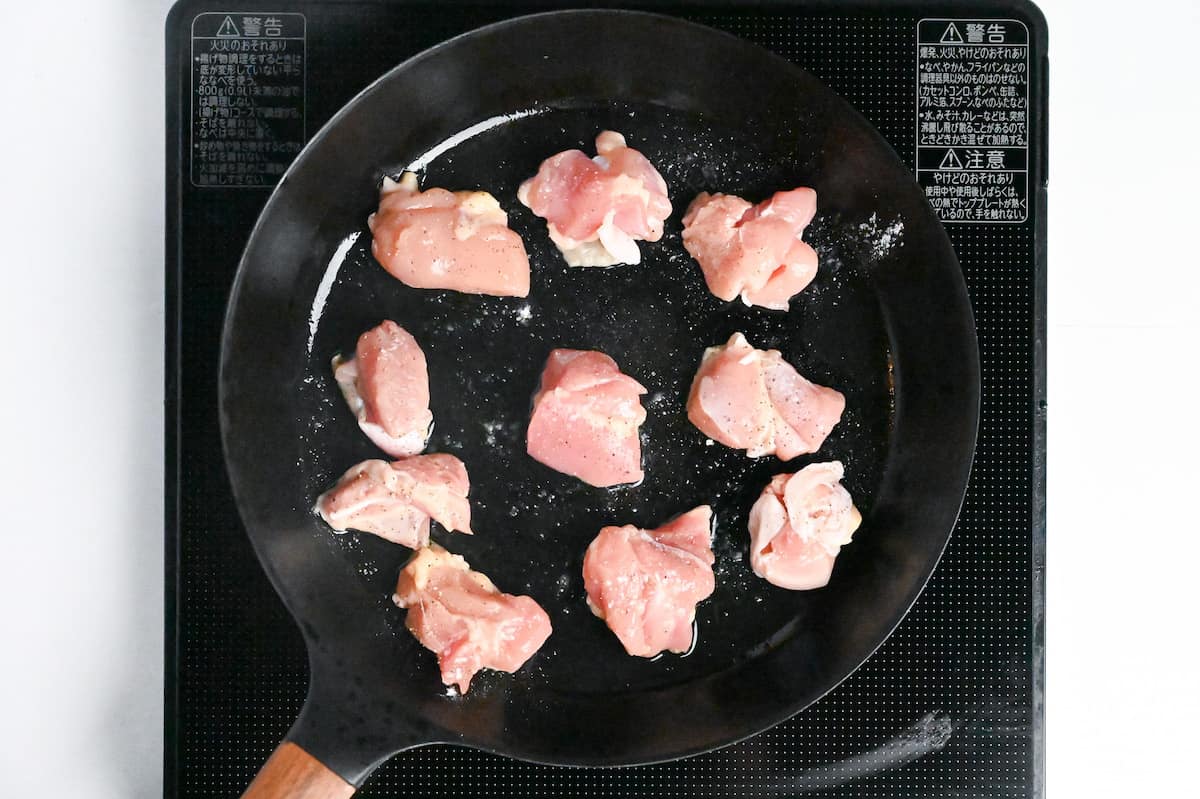
Flip and cook through, then set aside.
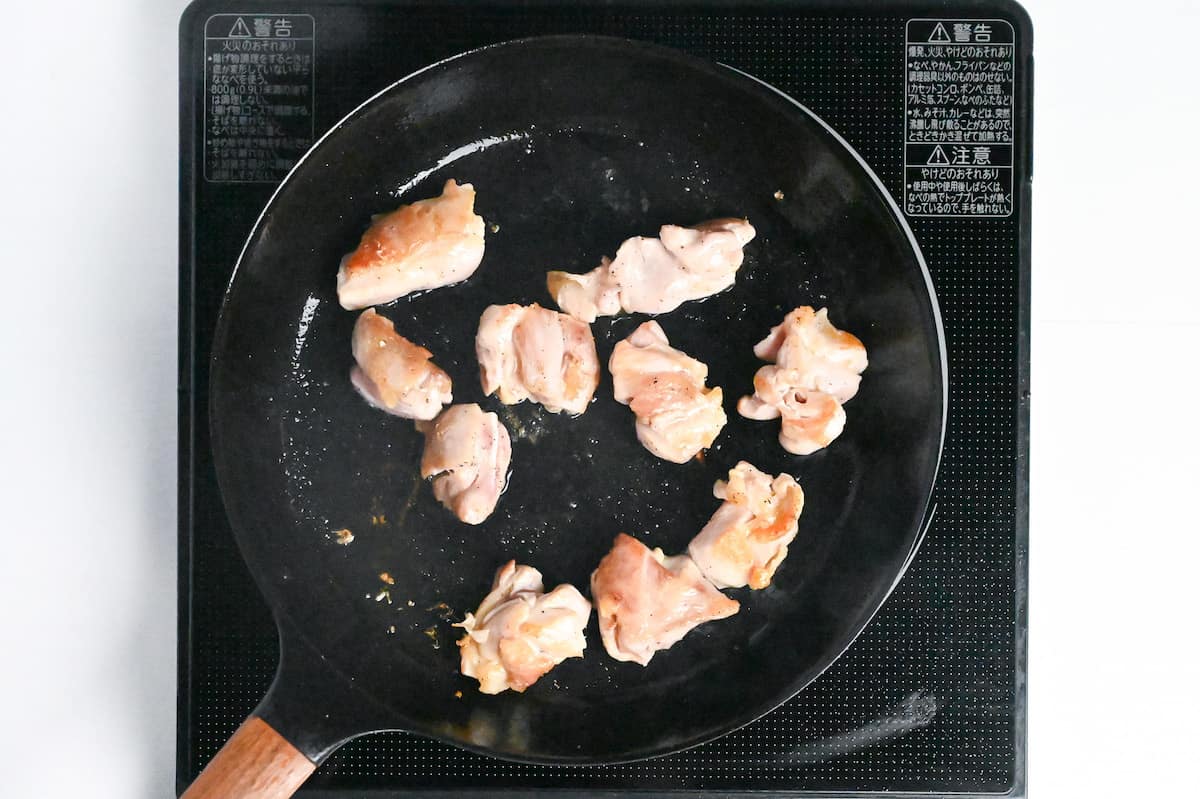
Boil water with salt. Blanch spinach stalks for 30 seconds.
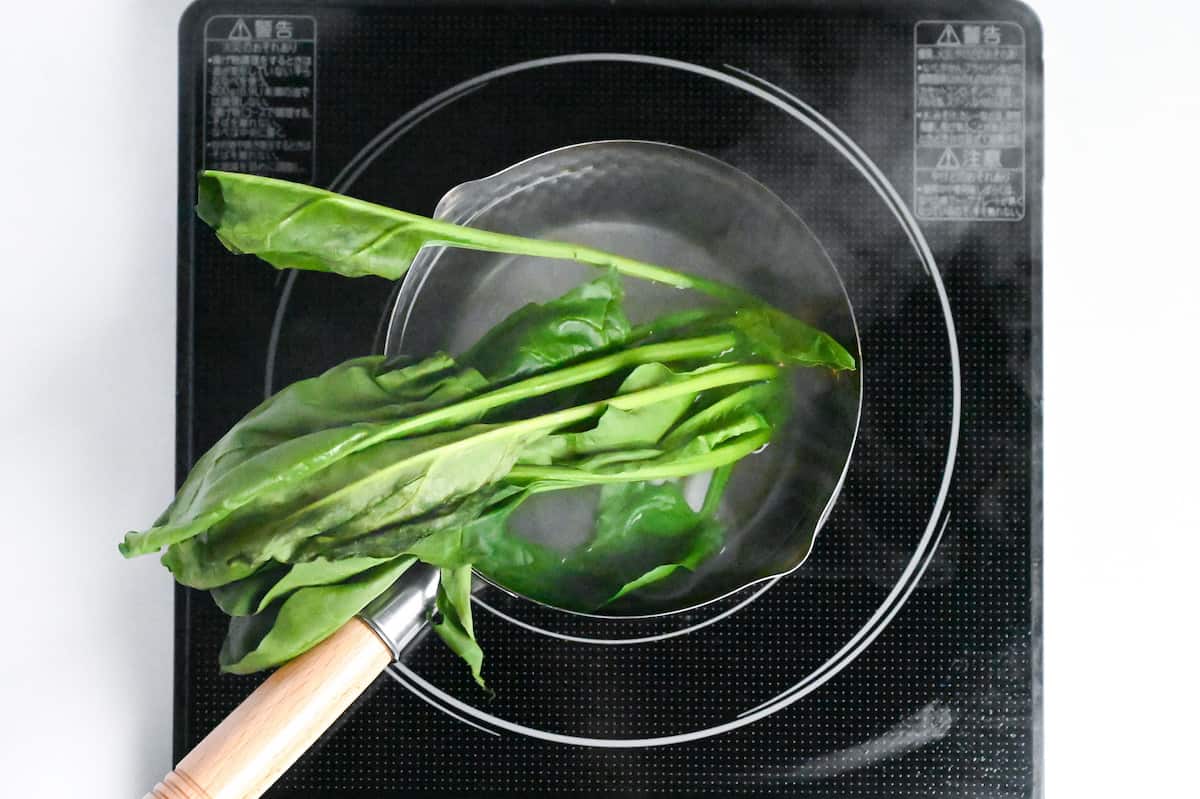
Then submerge leaves for another 30 seconds.
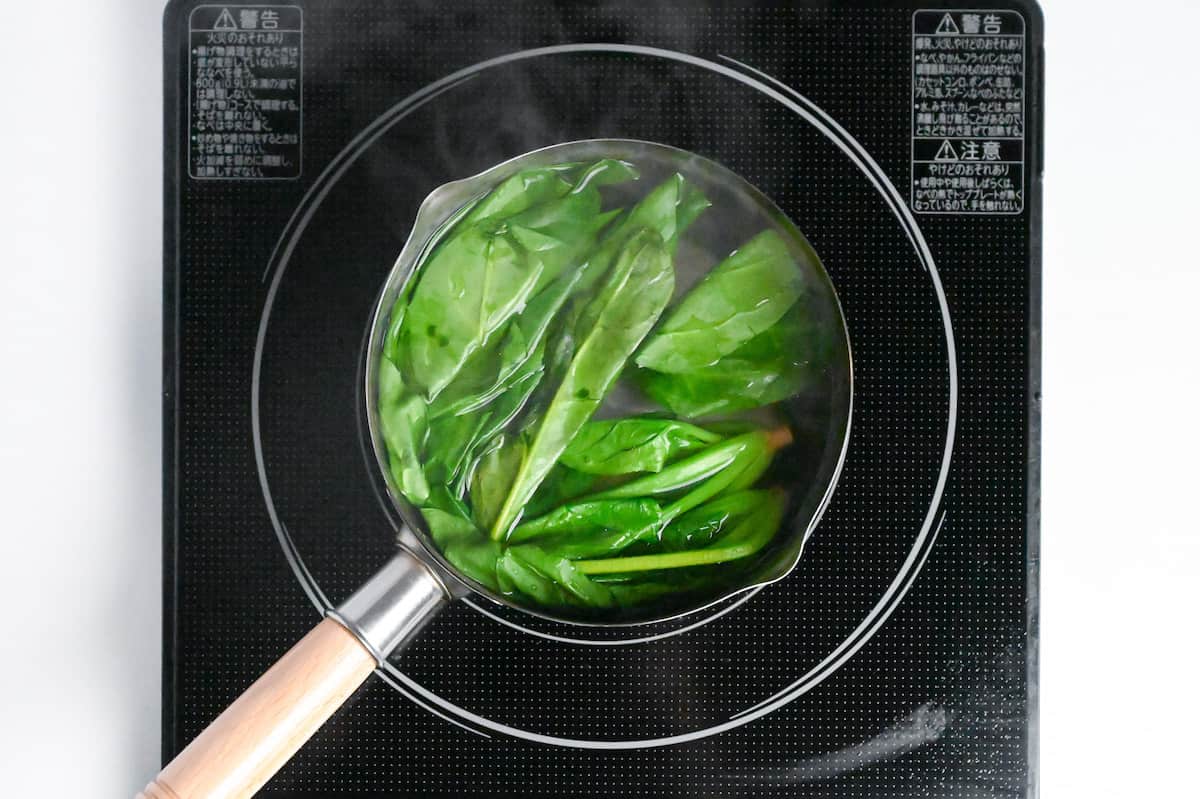
Transfer to ice water, then drain, squeeze out water.
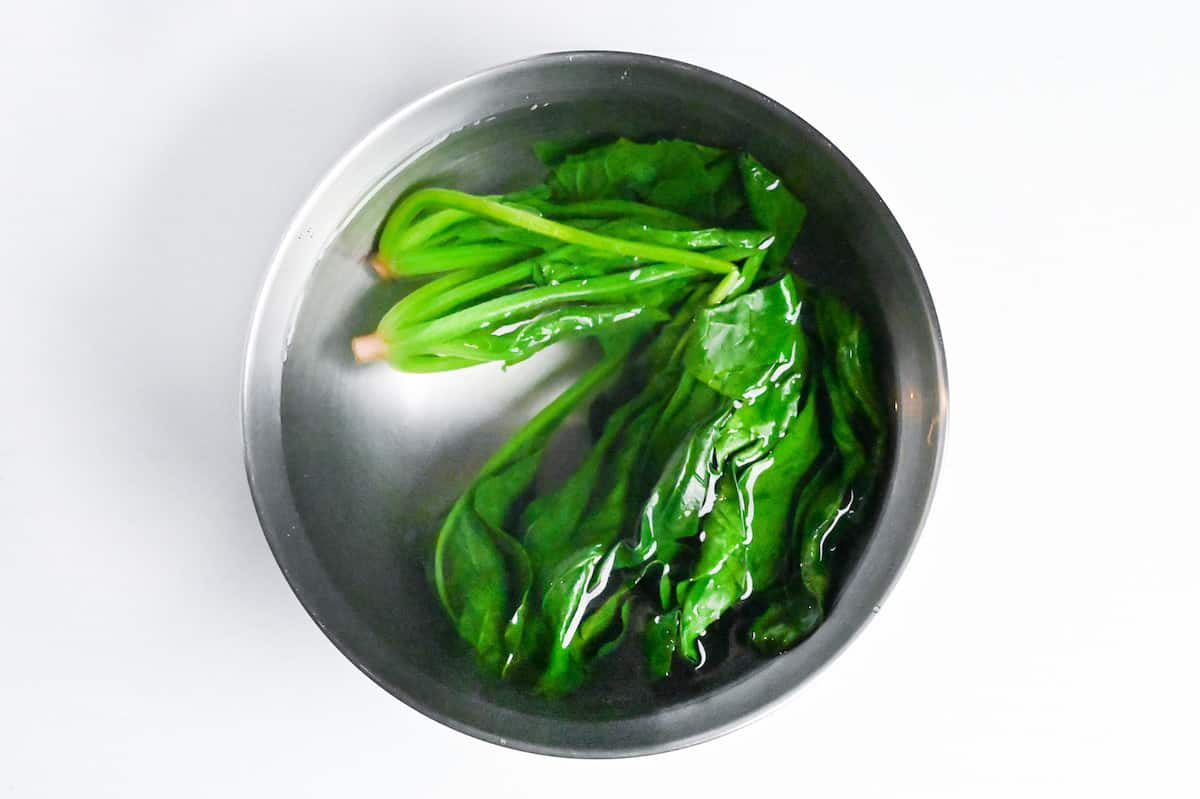
Cut into pieces.
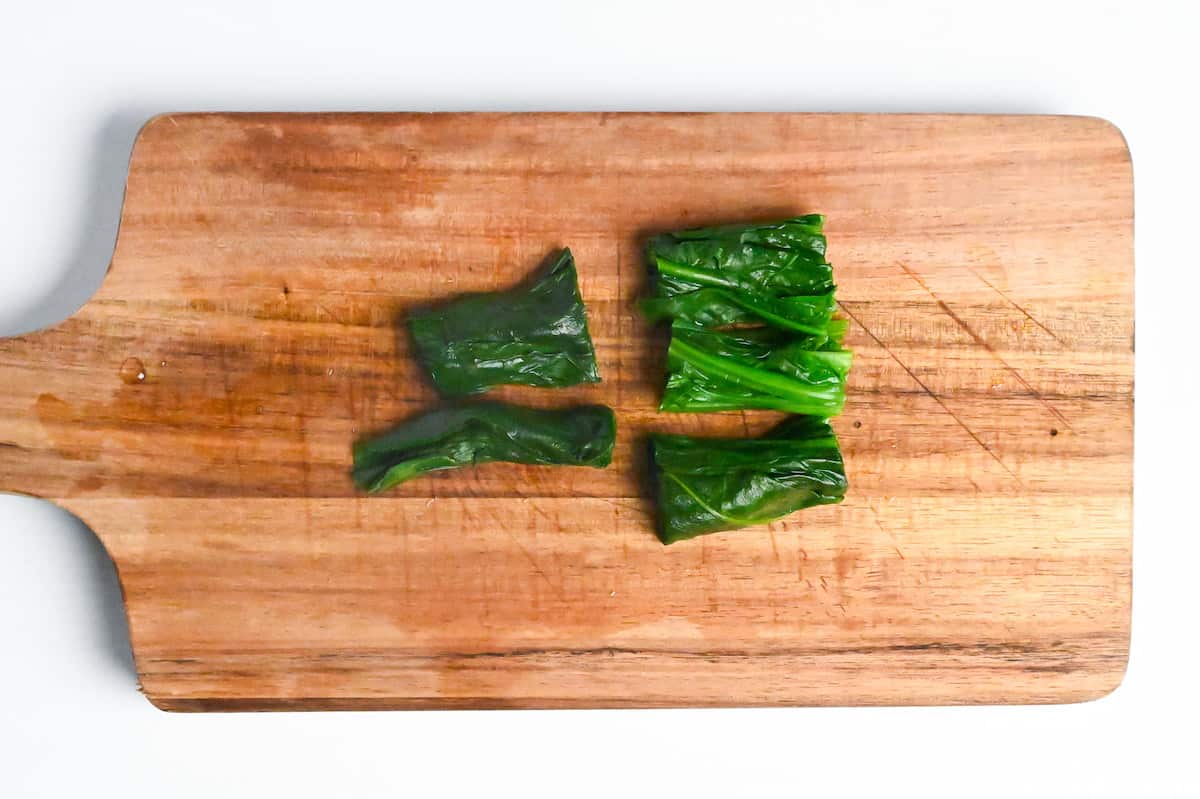
Boil udon noodles for 2-3 minutes less than package instructions. Drain, rinse, and set aside.
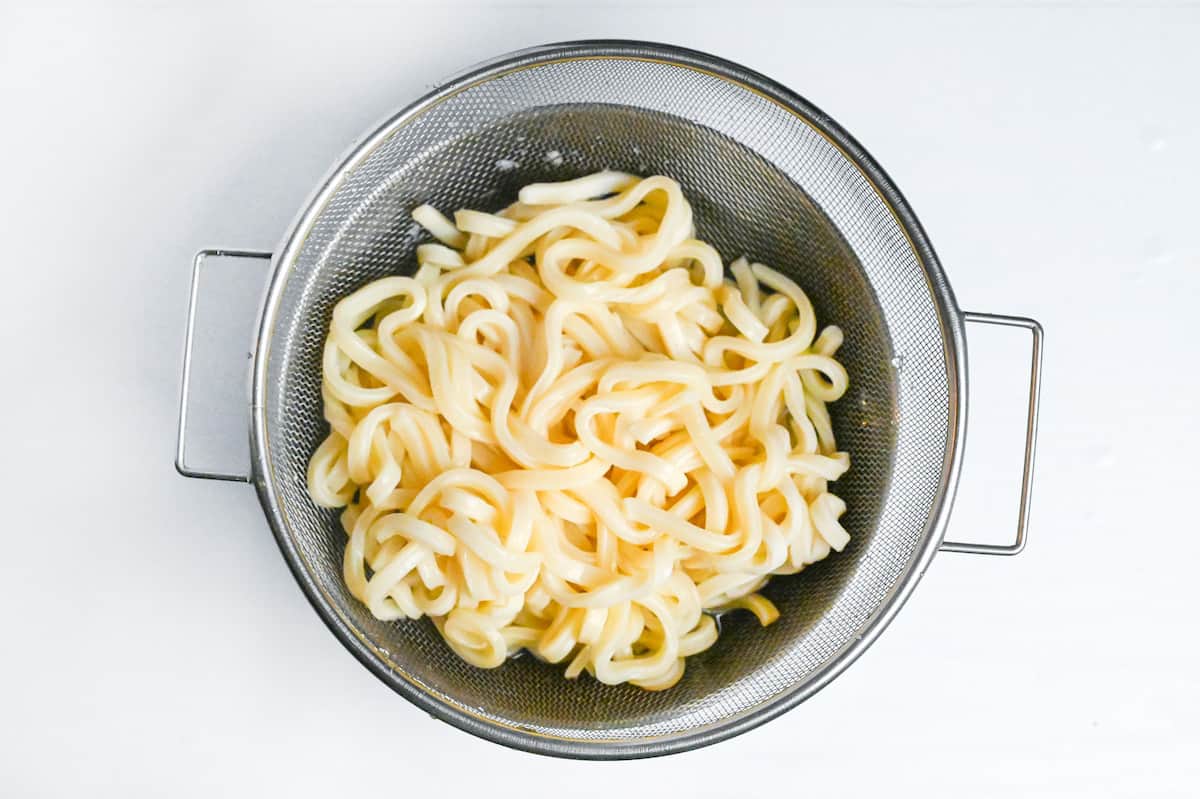
In a pot, combine dashi stock, soy sauce, and mirin. Boil to burn off alcohol.
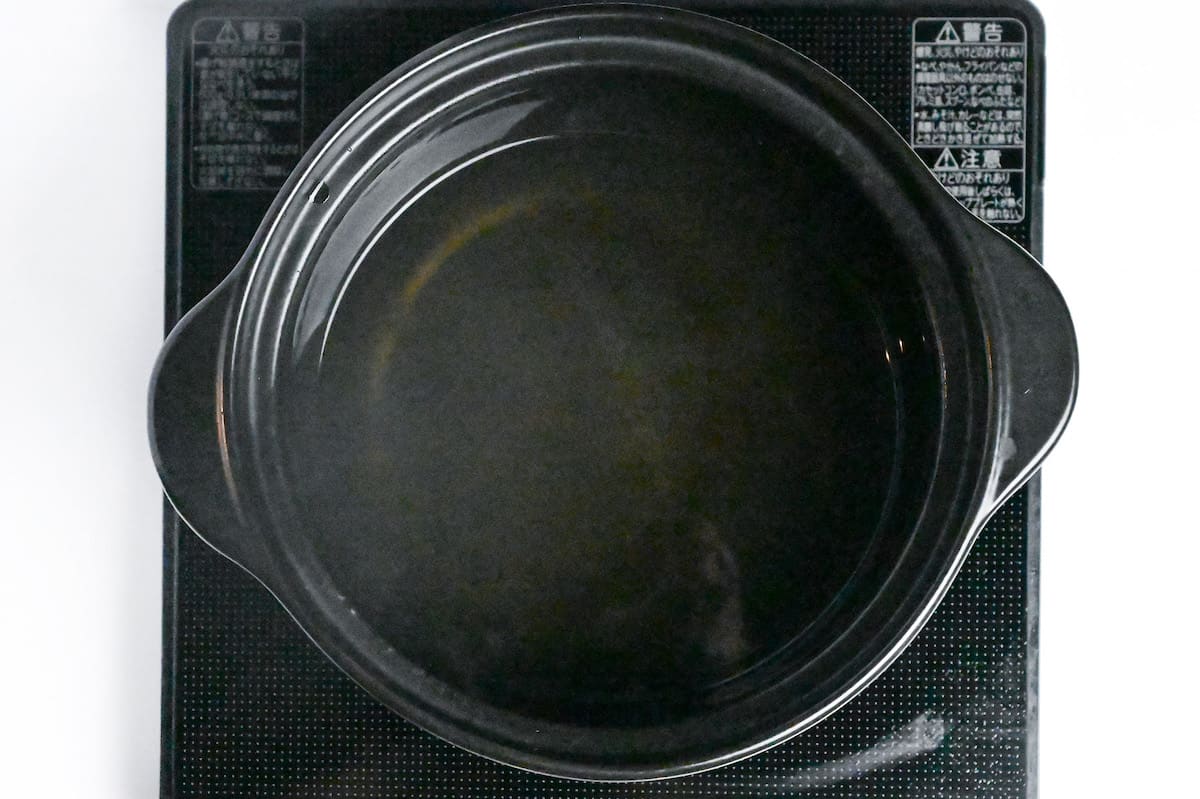
Add salt, shiitake, shimeji mushrooms, and green onions. Cook briefly.
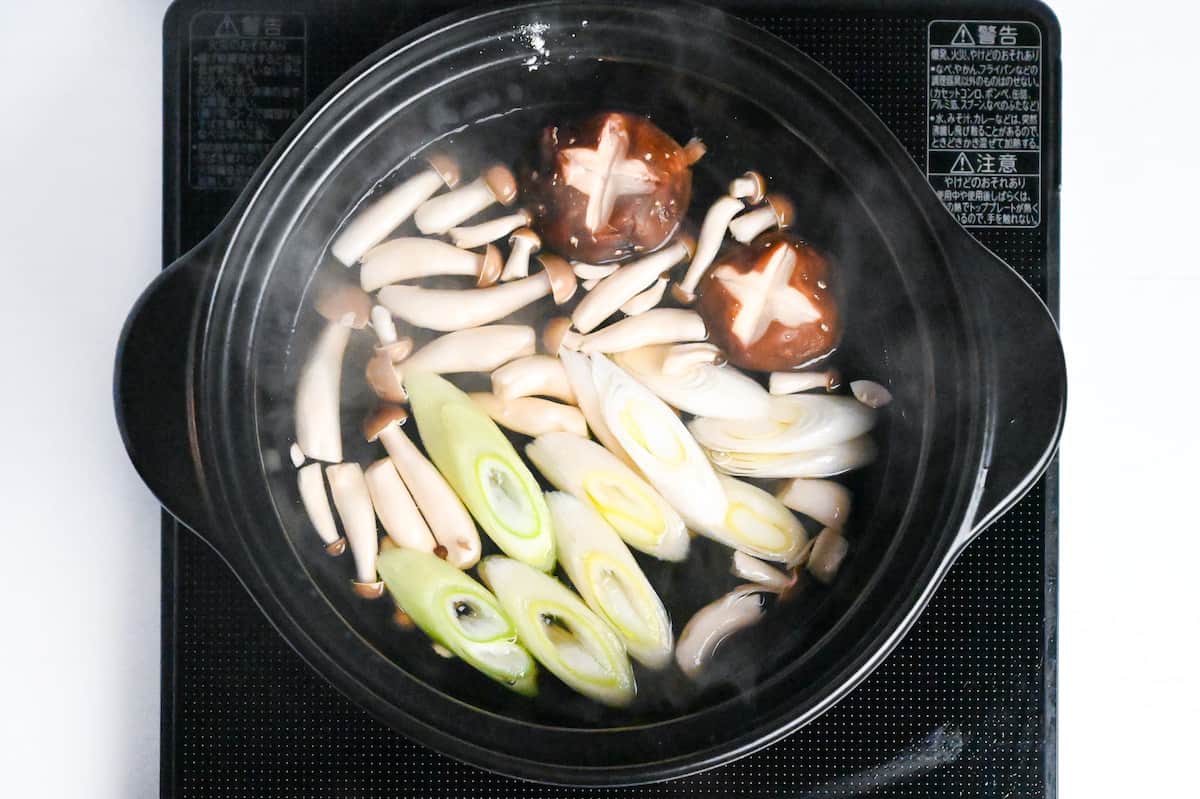
Add noodles, tempura shrimp, kamaboko, fu, spinach, and cooked chicken to the broth. Crack in two eggs, cover, and cook until eggs are done to your liking.
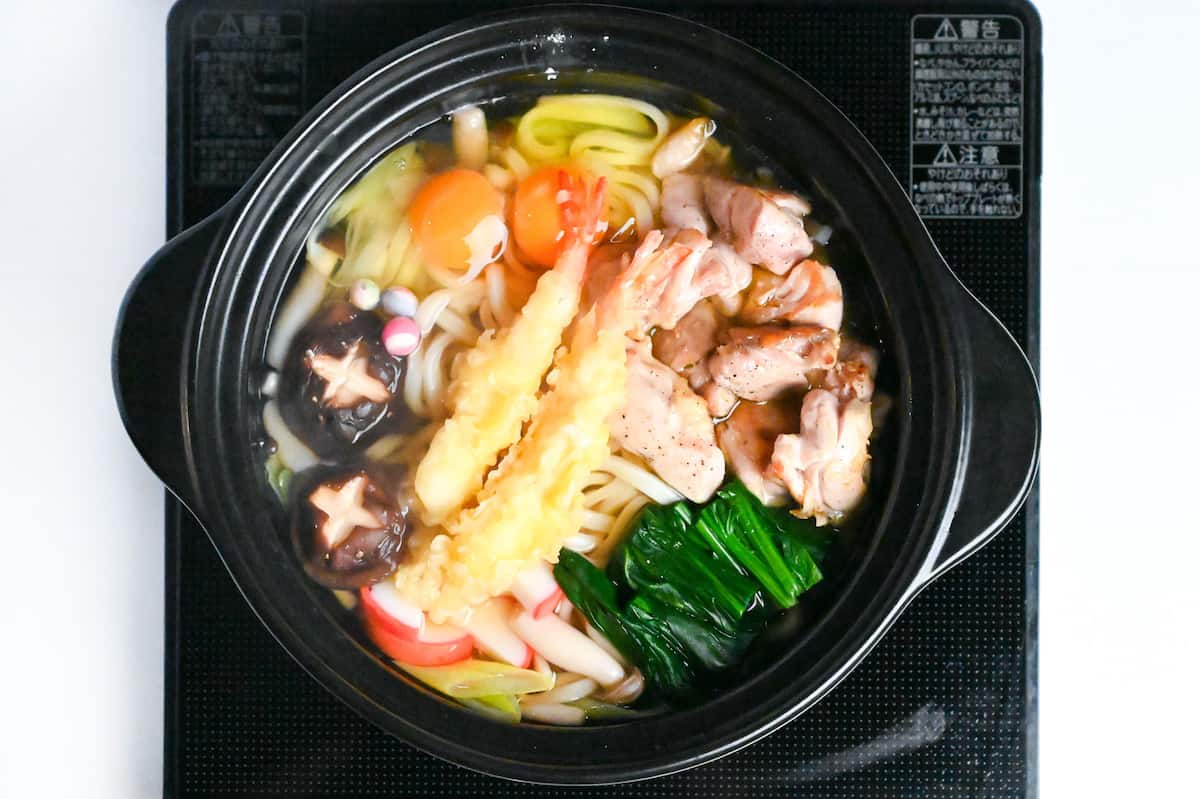
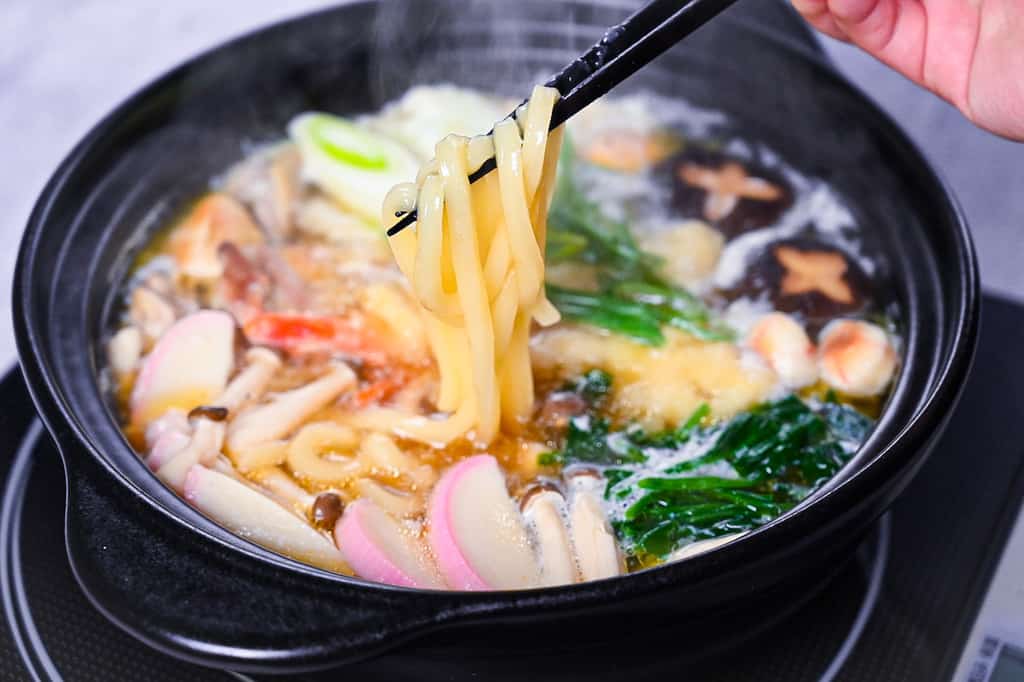
I hope you enjoy this Nabeyaki Udon recipe! If you try it out, I’d really appreciate it if you could spare a moment to let me know what you thought by giving a review and star rating in the comments below. It’s also helpful to share any adjustments you made to the recipe with our other readers. Thank you!
More Japanese Udon Recipes
- Beef Niku Udon
- Chicken Nabeyaki Udon
- Chicken Udon Noodle Soup (Tori Nanban Udon)
- Japanese Curry Udon
Want more inspiration? Explore my Udon Roundup Post for a carefully selected collection of tasty udon recipe ideas to spark your next meal!
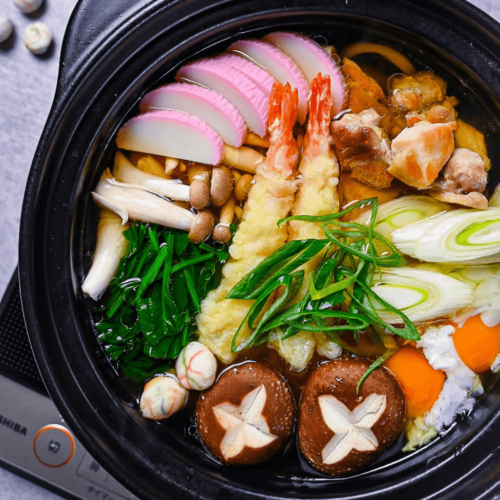
Nabeyaki Udon (Japanese Udon Hot Pot)
Ingredients
Broth
- 500 ml dashi stock
- 2 ½ tbsp Japanese soy sauce (koikuchi shoyu)
- 1 tbsp mirin
- ¼ tsp salt
Nabeyaki Udon
- 150 g boneless chicken thigh skin-on, cut into bitesize pieces
- 1 pinch salt and pepper
- 1 tsp cooking oil
- 50 g Oriental spinach
- 1 bowl ice cold water
- 2 portions udon noodles
- 2 fresh shiitake mushroom stems trimmed
- 50 g shimeji mushrooms
- 20 g green onion diagonally sliced
- 2 egg
- 2 tempura shrimp
- 6 slices kamaboko fish cake optional
- dried wheat gluten (fu) Japanese dry baked wheat gluten, optional
- green onion green part, finely sliced to garnish
Instructions
Prepping ingredients
- Heat a frying pan on medium and add 1 tsp cooking oil. Sprinkle 150 g boneless chicken thigh with 1 pinch salt and pepper and then place them in the pan with the skin side down.

- Once the skin is crispy, turn the chicken over and fry until cooked through. Remove the pan from the heat and set aside for later.

- Bring a saucepan of water to the boil and add a pinch of salt. Take 50 g Oriental spinach and place the stalks into the boiling water, holding it there for 30 seconds without submerging the leaves. (Hold it with tongs to prevent burns.)

- After 30 seconds have passed, submerge the rest of the spinach into the water and continue to boil for another 30 seconds.

- Turn off the heat and transfer the spinach immediately into the bowl of ice cold water.

- Take the spinach out of the water and squeeze the water out as much as you can. Cut into 4-5cm (approx 2 inch) long pieces and set aside.

- Boil 2 portions udon noodles for 2-3 minutes less than the time stated on the packaging, then pour them into a colander to drain the water and rinse to remove any excess starch. Set aside.

Broth
- Take your donabe (or a large pot) and add 500 ml dashi stock, 2 ½ tbsp Japanese soy sauce (koikuchi shoyu) and 1 tbsp mirin. Bring to a boil and allow to bubble for 1-2 minutes to burn off the alcohol in the mirin.

- Add ¼ tsp salt and mix. Add 2 fresh shiitake mushroom, 50 g shimeji mushrooms and 20 g green onion to the broth and allow to boil for 1-2 minutes.

- Add the noodles, 2 tempura shrimp, 6 slices kamaboko fish cake, fu, blanched spinach and cooked chicken (with juices from the pan). Crack two eggs into the pot, place a lid on top and boil in the broth for a few minutes until the eggs are cooked to your preference.

- Sprinkle with green onion to garnish.

- Enjoy!
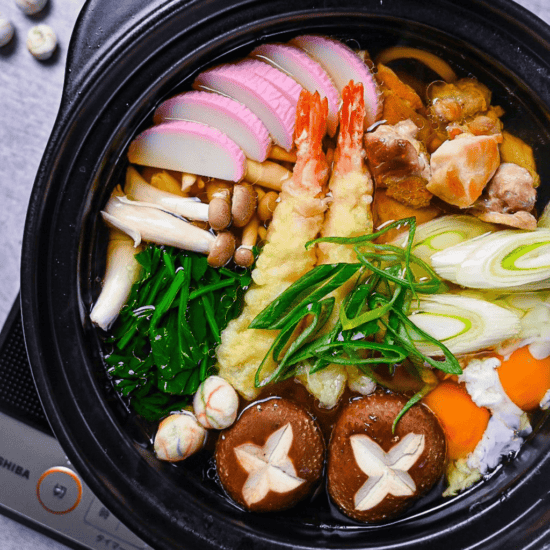


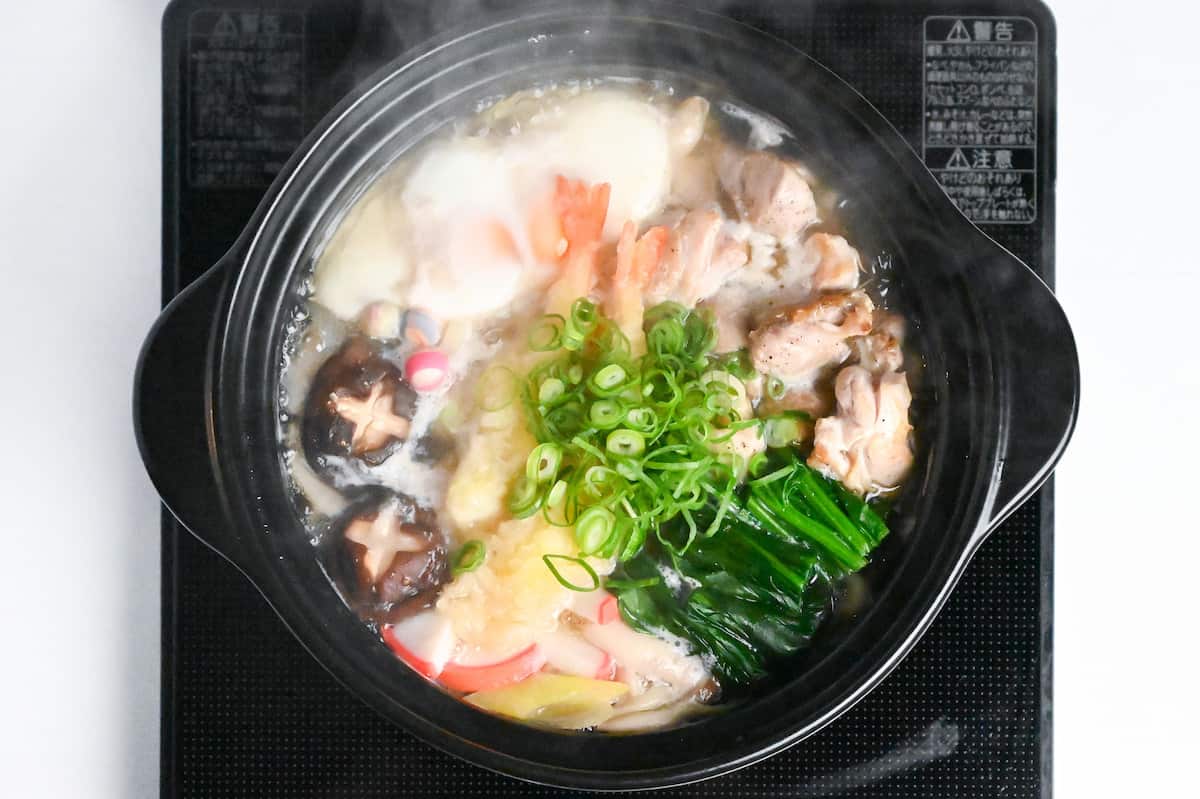
Can FU be made at home if so is there a recipe for it to attempt to make it.
Thanks in advance
Kindest Regards
John
Hi John,
I’m not sure how to make fu. Since it’s for decoration rather than flavour, I’d recommend omitting it or substituting for tofu.
Thanks for your question and sorry I couldn’t be of any more help!
Yuto